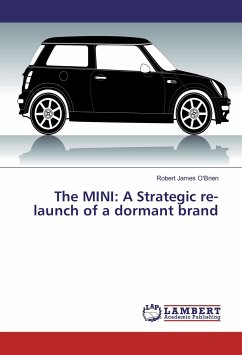
The MINI: A Strategic re-launch of a dormant brand
Versandkostenfrei!
Versandfertig in 6-10 Tagen
37,99 €
inkl. MwSt.

PAYBACK Punkte
19 °P sammeln!
The BMW MINI became an overnight success upon its launch in 2001. The development project for the car was fraught with conflict between BMW and Rover as to what the Mini for the 21st century should be. In my study I chart that conflict and examine the final product; the MINI as envisioned by BMW. This car abandoned the functionality and efficiency of the original 1959 design and instead embraces the more sporting aspects of the Mini brand by cleverly maintaining the original's heritage. BMW built this small car and underpinned it with their own technology, including a large and expensive rear-...
The BMW MINI became an overnight success upon its launch in 2001. The development project for the car was fraught with conflict between BMW and Rover as to what the Mini for the 21st century should be. In my study I chart that conflict and examine the final product; the MINI as envisioned by BMW. This car abandoned the functionality and efficiency of the original 1959 design and instead embraces the more sporting aspects of the Mini brand by cleverly maintaining the original's heritage. BMW built this small car and underpinned it with their own technology, including a large and expensive rear-axle design that gave the MINI a uniquely sporty feel. It was not a practical car nor a cheap one and I examine why this ultimately proved to be the most successful stagey for the brand. This business model has since been copied by other car manufacturers but the MINI was the first and as such the template. As the automotive industry becomes more competitive and homogeneous, I believe consumers are more willing to embrace the perceived personalization of the cars and more importantly, are wiling to pay for the privilege.












